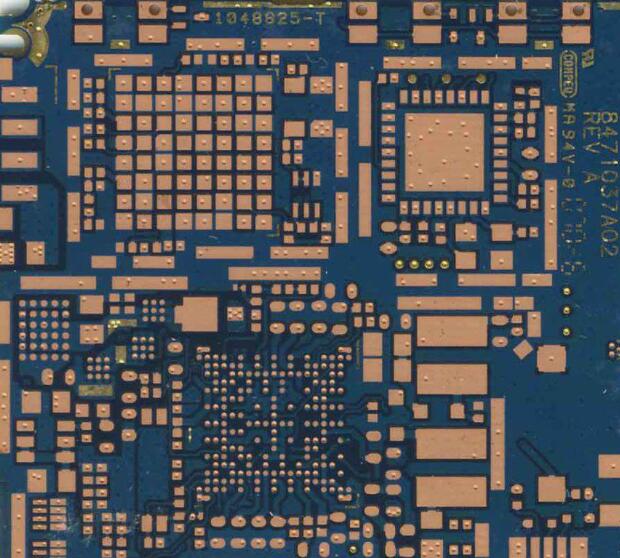PCB and electronic product design
In electronic design, the PCB is the physical carrier of our design content, and the ultimate realization of all our design intent is expressed through the PCB board. In this way, PCB design is an indispensable link in any project. However, in the previous design, due to the low frequency, low density, and large spacing between device management, the work of PCB design is for the purpose of connectivity, without any other functional and performance challenges. So for a long period of time, the status of PCB design in the whole project is very low. The physical connection of the PCB is usually done by the hardware logic connection designer. This is still the development model for some small products.
With the rapid development of electronics and communication technology, today's PCB design is facing completely different and brand-new challenges. Mainly manifested in the following aspects:
1. The signal edge rate is getting faster and faster, and the on-chip and off-chip clock rates are getting higher and higher. The current clock frequency is no longer a few megabytes in the past, and clocks with hundreds of megabytes and gigabytes are becoming more and more common on single boards. . Due to the rapid development of chip technology, the edge rate of the signal is getting faster and faster. At present, the rising edge of the signal is about 1 ns. This will cause system and board-level SI and EMC problems to become more prominent;

2. The integration scale of circuits is getting larger and larger, and the number of I/Os is increasing, which makes the interconnection density of single boards continue to increase; as functions become more and more powerful, the integration of circuits is getting higher and higher. The level of chip processing technology is getting higher and higher. The DIP package in the past has almost disappeared on the current single board, and the small-pitch BGA and QFP have become the mainstream package of chips. This makes the density of PCB design increase accordingly.
3. The time for product development and market launch is constantly decreasing, so we must face the severe challenge of one-time design success; time is cost, and time is money. In a field where electronic products are updated very quickly, the window of opportunity for profit will be much larger if the product is launched one day sooner.
4. Because PCB is the physical carrier of product realization. In high-speed circuits, the quality of the PCB is related to the function and performance of the product. The same device and connection, different PCB carriers, their results are different.
Therefore, the design process is slowly changing. In the past, the logic function design in the design often accounted for more than 80% of the hardware development and design, but this proportion has been declining. In the current hardware design, the logic function design only accounts for 50%, and the PCB design part also accounts for 50% of the time. Experts predict that in future designs, the logic function overhead of hardware will become smaller and smaller, while the overhead for high-speed PCB design such as developing design rules will reach 80% or even higher.
All these are just illustrations, PCB design will be the focus and difficulty in current and future design.
Generally, our PCB design mainly focuses on the following points:
1. The realization of the function
2. Stable performance
3. Easy processing
4. The beauty of the veneer
The realization of the function is the first step of our PCB. In the past design, because the signal edge rate and clock frequency are relatively low, as long as the logical connection is correct, the physical connection will not affect the performance of use. But this view is not used in the current design. There is an example to illustrate this point:
The circuit board designers of a well-known American manufacturer of image detection systems recently encountered a peculiar thing: a product that was successfully designed, manufactured and put on the market 7 years ago has been able to work very stably and reliably. However, the products that have been rolled off the production line recently have problems, and the products cannot operate normally.
Therefore, the true connection of the logic cannot make the function truly realized. The quality of the physical connection is also the main condition for the realization of the function.
The guarantee of performance depends on the design of the PCB. Everyone knows this point of view. The same logic connection, the same device, and different PCBs have different performance test results. Good design not only has high stability, but also can pass various demanding tests. However, it is impossible to achieve such an effect with a non-ideal design. In some low-end products, the chipsets used by many manufacturers are the same, and the logical connections are also similar. The only difference is the level of their respective PCB design levels. The difference of products is mainly reflected in the PCB design.
The ease of processing is also an important indicator of the quality of PCB design. Good PCB design is convenient for processing, maintenance, testing, and manufacturing. The quality of PCB is not only related to the production efficiency of PCB processing manufacturers and SMT manufacturers, but also closely related to our testing and debugging convenience.
Beauty is also an element of PCB design. The overall beauty and atmosphere make people feel comfortable when they see it. PCB is also a craft. A good PCB will make people stop and miss.
PCB design is a comprehensive discipline, the product of the coordination of quality, cost, time and other aspects. There is no best in PCB design, only better. In short, high-speed PCB design is a serious challenge facing the field of system design today. Whether it is design methods, design tools, or the composition of the design team, and the design ideas of engineers, they all need to be actively and seriously addressed.